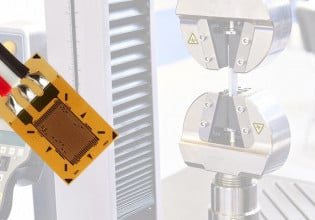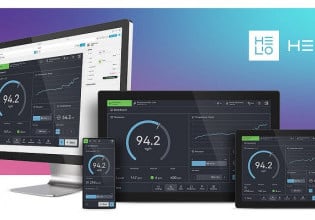Banner Engineering Shines Light On Hard-to-See Spaces With New Strip Light
Expanding its WLF12 series of flexible LED strip lights, Banner Engineering has released a daylight white light variant. The new LED strip brings bright illumination to industrial applications where light is needed.
Banner Engineering has added a new option to its lineup of flexible LED strip lights designed specifically for the industrial environment. The lights are now available in a daylight white variant, ideal for lighting hard-to-see industrial spaces.

Banner’s new daylight white strip lights can illuminate control cabinets and other workspaces where light is needed. Image used courtesy of Banner Engineering
Industrial Lighting
LED lighting has the potential for a variety of uses in the industrial setting. Better lighting ensures a higher level of safety and helps improve working conditions in hard-to-reach locations. It can also be used for more advanced applications, like communicating machine status to workers. As part of the existing WLF12 series of flexible LED strip lights, the new bright daylight white models are specifically designed to illuminate difficult-to-light areas in the industrial environment, like inside control cabinets or on machines.

The WLF12 strip lights can be cut into 50 mm increments for greater customization. Image used courtesy of Banner Engineering
WLF12 Flexible Strip Lights
The daylight white strip lights offer bright lighting for workspaces, cabinets, and machines with 285 lumens per foot of LED strip light. Like other models in the WLF12 series, the daylight white lights have an IP66, IP67, and IP69K protection rating, enabling their use in harsh industrial environments. The housing is made of durable silicone that helps to provide flexibility while keeping water intrusion into the lighting circuitry out, which Banner hopes will provide long-lasting performance. The lights can also handle continuously damp installation areas if necessary.
The LEDs operate on 24 V DC, a common voltage in industrial control cabinets. They come standard with an M12 connector, ensuring easy installation in most settings. The white strip lights come in six individual housing lengths, ranging from 300 to 4000 mm. These lengths can be further modified by cutting the strip into 50 mm increments for precision fitment into different locations.
The strips feature a high-strength adhesive on the back, which gives users a strong permanent bond to the surface on which the lights are mounted. Installation in tight spaces is possible, as the strips can be bent with a maximum bend radius of 15 degrees. The lights' operating temperature is -20 to 45 °C.

The WLF12 Pro multicolor lights can be controlled via IO-Link for use in more advanced applications. Image used courtesy of Banner Engineering
WLF12 Pro Multicolor Strip Lights
In addition to the new daylight white LED strip additions, Banner offers WLF12 Pro multicolor strip lights. The color variants come in five individual standard lengths ranging from 300 to 2000 mm and can also be cut into 50 mm segments. Mounting is achieved using the same adhesive as the white variant of the LED strips.
The WLF12 Pro lights can be controlled via IO-Link, giving users advanced customization, including 19 colors and 15 separate animation options. A controller for the lights, the LC25, can program different light patterns into the strip. No-code operation is also available for simpler applications.
The strip lights are segmented into groups comprising three LEDs each; every segment can be controlled independently, functioning as a single unit. This grouping means that each set of three LEDs can be managed separately, providing enhanced flexibility and customization in lighting control.






